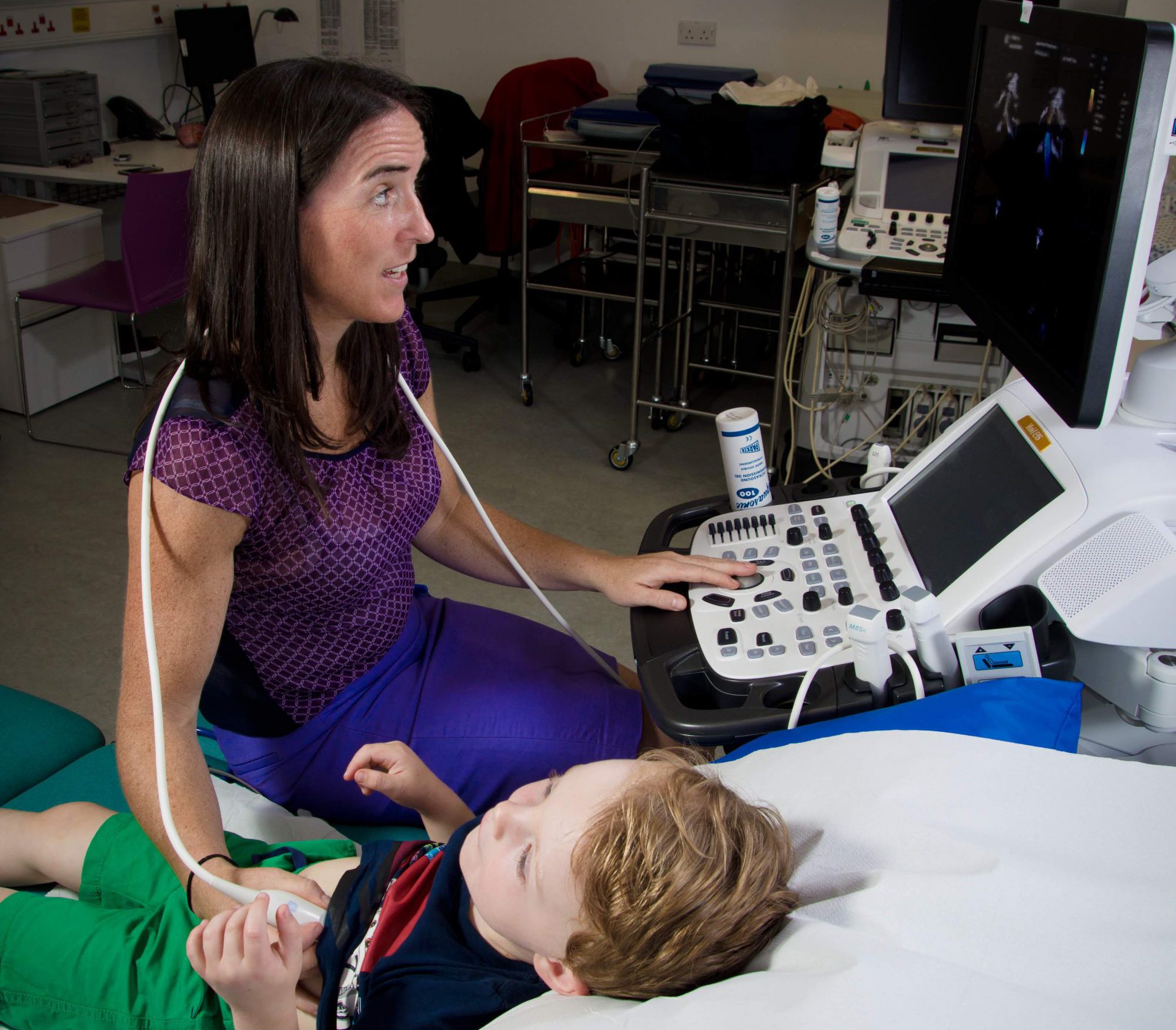What is coarctation of the aorta?
The aorta is the major blood vessel carrying oxygenated (red) blood to the body. Coarctation of the aorta refers to a condition where there is a tightness (or narrowing) in this body artery. A coarctation is usually located just past the aortic arch, which has branches providing blood to the head and arms. When this defect is present, blood flow is restricted to the lower half of the body and the left ventricle muscle of the heart must pump harder to force the blood through the narrowed opening.
The clinical presentation is variable and depends principally upon the severity of the narrowing and the age of the baby or child. Milder degrees of coarctation are often not detected until childhood or adolescence and often come to light from the incidental finding ofweaker leg (femoral) pulses, a murmur or hypertension (high blood pressure). When the condition is severe, there can be reduced blood flow to the body in these children. In babies, this blockage can cause the left ventricle to weaken and make your baby very sick. In older children, this blockage can cause the left ventricle to thicken over time and also cause high blood pressure in the brain. If the muscle becomes too thick and is no longer able to function well, it can eventually fail.
Coarctation of the aorta occurs in about 6 to 8 percent of all children with congenital heart disease, and twice as frequently in boys. It also occurs in about 10 percent of girls who have Turner syndrome, a chromosomal abnormality.
Seventy-five percent of children with coarctation of the aorta also have a bicuspid aortic valve, in which the aortic valve has two leaflets, instead of the usual three. It can also be associated with other left sided heart defects and ventricular septal defects.
Treatment for coarctation of the aorta?
The majority of coarctations are treated surgically, although in older children who are suitable, there is increasing experience with catheter-based (key-hole) interventions as well. Treatment strategies are tailored to the child’s age, size and the anatomy of the aortic arch as well as the presence of other associated cardiac conditions.
